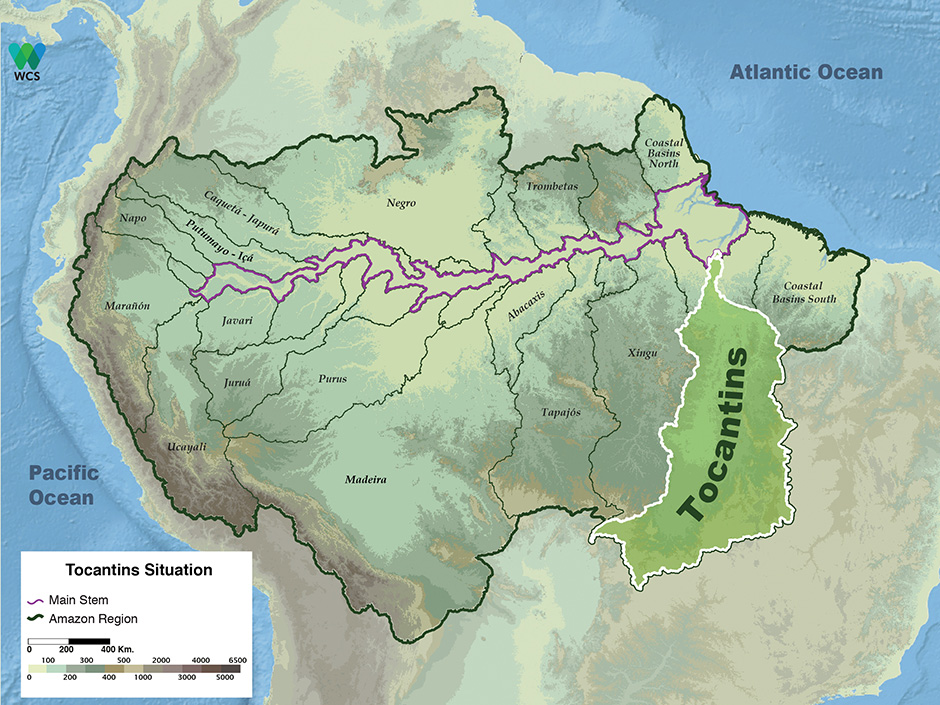The Tocantins fisheries region extends from Tucuruí Dam, 350 km upriver, to the mouth of the Tocantins River.
The fisheries in this region changed radically after the construction of Tucuruí Dam in 1986. Before the late 1980s, most fish productivity was in the stretch below the first major rapids, the site where the dam was built. The hydroelectric dam created an enormous lake that resulted in a total increase in aquatic productivity. Reservoir fishermen migrated from various parts of Brazil to take advantage of the new fisheries in Tucuruí Reservoir. Although fish production increased exponentially in the large reservoir, downriver of the dam there was a precipitous decline in catches once the natural flow of the river was modified.
There are fisheries data from nine cities along the Tocantins River. The most upriver city for which there are data is Marabá at the confluence of the Tocantins and Itacaiunas rivers. Marabá is also considered the limit of fishermen who exploit the Tucuruí reservoir. All of the important fishing ports of the Tocantins River are in the state of Pará, with five below the dam and four above it. Approximately 500,000 people live in this fisheries region and the maximum potential yield is 11,300 tons.
The largest city of the Tocantins fisheries region is Marabá, with a population of 252,000. Fish catches delivered to Marabá are only 7% of the total Tocantins catch. Cametá, with 121,000 people, is the second largest city of the region and accounts for 19% of total potential catch. Cametá fisheries are based mostly on mapará and young size classes of these species are also heavily exploited. The hydroelectric power station is located at Tucuruí, economically the most important city of the Tocantins region. The city of Tucuruí, with 100,000 people, accounts for 25% of total potential catch. Jacundá and Itupiranga are small to medium-sized cities with fewer than 53,000 inhabitants, but with relatively large fishing fleets. Jacundá alone accounts for 23% of the total potential fisheries yield of the Tocantins region.
Fishing fleets consist mostly of large motorized canoes that carrying Styrofoam boxes packed with ice. Downstream of the dam there are also boats that can carry 10 tons of ice. Fish captured in the Tocantins region is sold locally and exported to nearby cities. Fish captures in the dam reservoir are seven times those downriver of the impoundment. Gill nets are the most important fishing gear used in the dam reservoir. In the lower course of the Tocantins River, fishing gear is more diverse and, in addition to gill nets, includes seines, weirs and line-and-hook.
Fish yields in the reservoir and the downriver stretch have increased in the last few years. Yields from the lower section almost doubled between 2000 and 2003, from 650 to 1,110 tons/year. In the reservoir catches increased from 4,000 to 7,000 tons/year. Apparently fish populations of the lower course of the river have somewhat recovered since their decline immediately after the dam was closed in the late 1980s.
Although many different fish species are captured in the Tocantins region, 12 species represent 90% of the total catch, with various species of mapará and pescada accounting for 50% of the total catch. Fisheries for tucunaré (Cichla spp.) were important when the reservoir was first created. It is thought that nutrient enrichment from decaying vegetation and upstream inputs increased the production of small fish on which tucunaré feed. After nutrient levels began to decline in the reservoir, tucunaré populations also decreased because of fewer prey. Curimatã migrations were impeded when the dam was closed and fisheries for this species almost disappeared. It now appears that curimatã may have readapted to the lower part of the river as there are now some fisheries for this species. Mapará catches continue to increase in the reservoir and have reached 3,500 tons/year recently. Downriver, however, no more than 200 tons/year have been recorded.
-

Tocantins 1
Mapará (Hypophthalmus edentatus) from the Rio Tocantins. Photographer: Ronaldo Barthem
-

Tocantins 2
Photographer: Michael Goulding
-
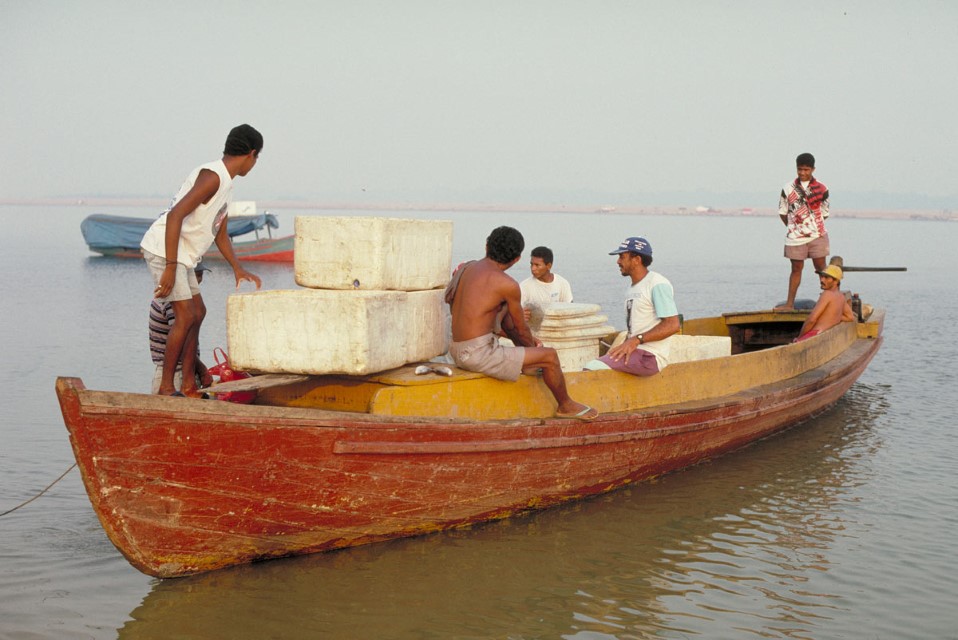
Tocantins 3
Photographer: Michael Goulding
-
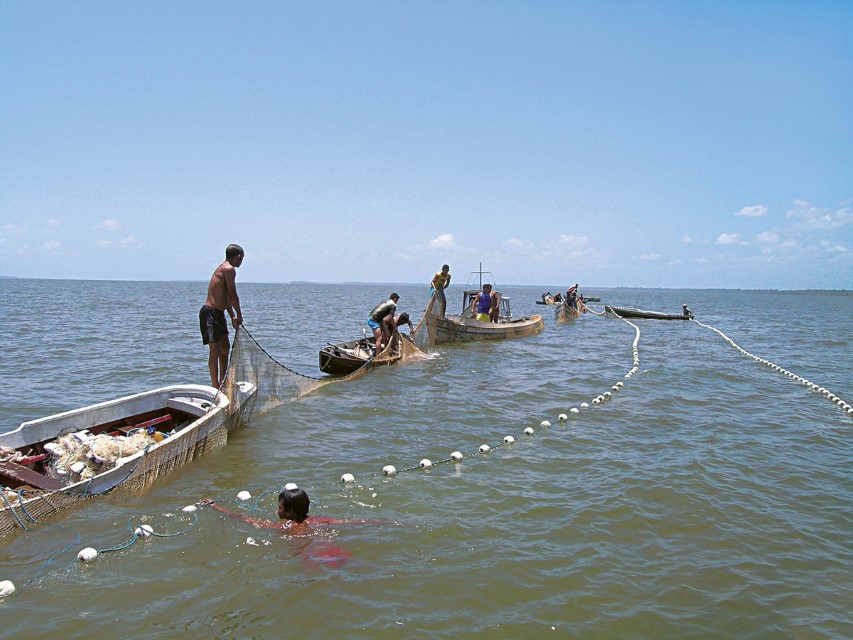
Tocantins 4
Fishing mapará in the Lower Tocantins with large seine. Photographer: Michael Goulding
-
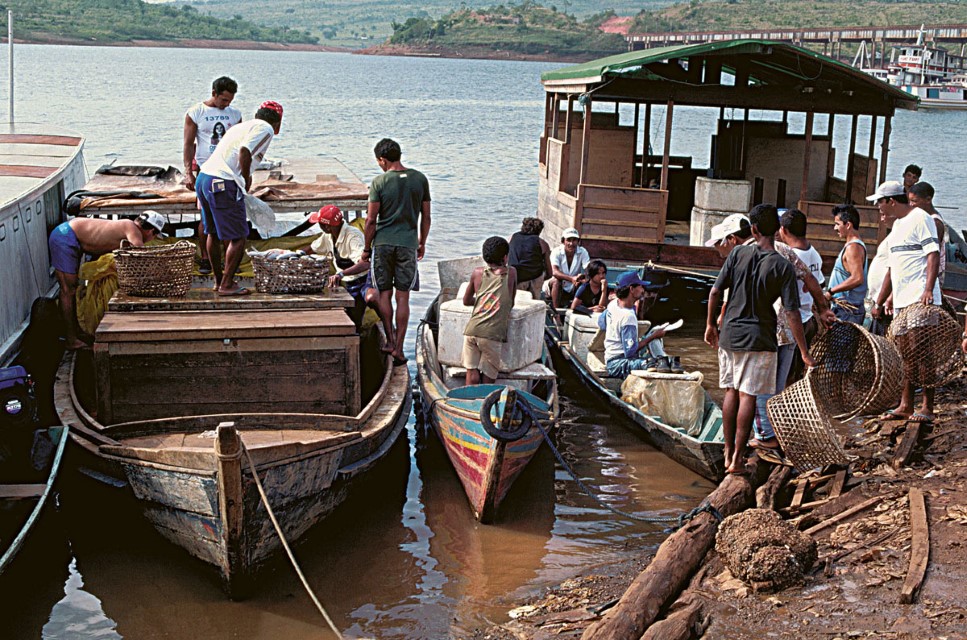
Tocantins 5
Fishing boats on shore of Tocantins Dam reservoir at Tucuruí. Photographer: Michael Goulding
-
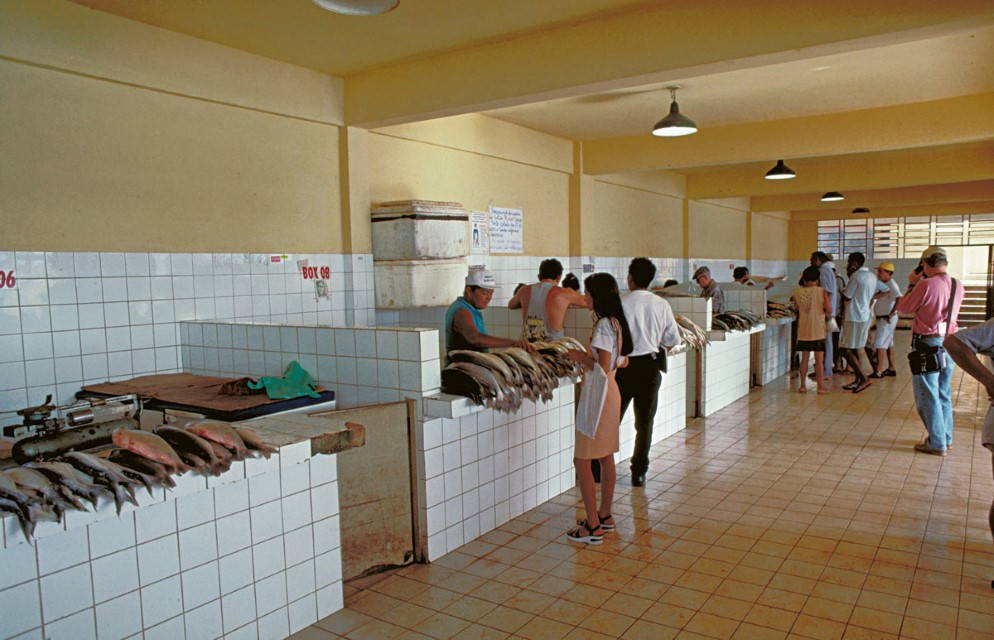
Tocantins 6
Fish market in city of Tucuruí, Rio Tocantins. Department – Country: Amazonas – Brazil Main Basin – Sub Basin: Negro – Lower Negro Main Stem Photographer: Michael Goulding
-

Tocantins 7
Fishermen in the Tucuruí reservoir. Department – Country: Pará – Brazil Main Basin – Sub Basin: Tocantins – Lower Tocantins Main Stem Photographer: Michael Goulding
-
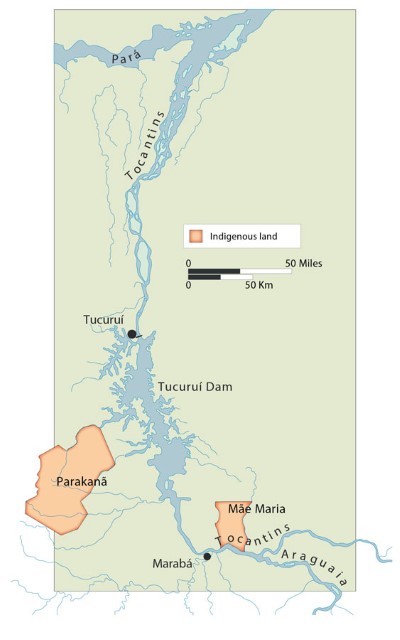
Tocantins 8
-
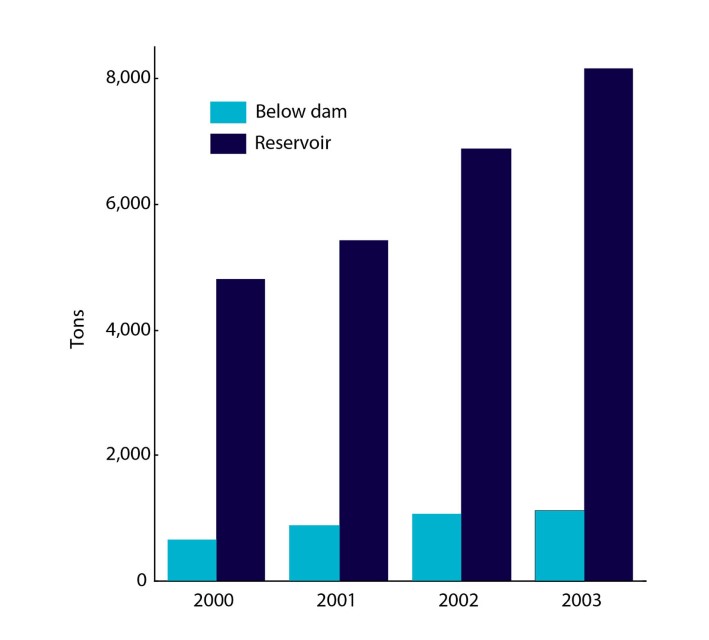
Tocantins 9
Tocantins and Tucuruí Dam annual catch by fishing zone.
-
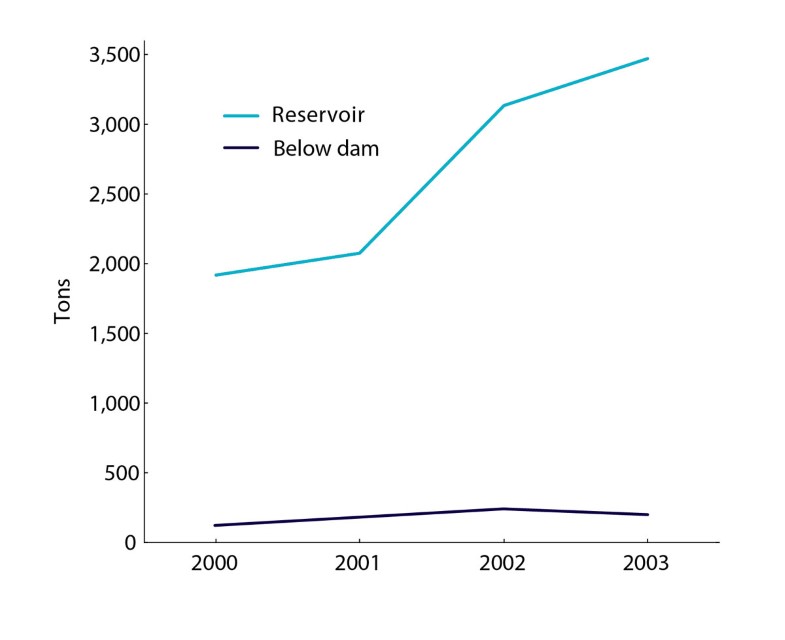
Tocantins 10
Tocantins annual catch of mapará by fishing zone.
REGION
Central Amazon
Bz-Co-Pe Border
Estuary
Lower Amazon
Peruvian Amazon
Juruá
Purus
Madeira
Upper Madeira
Tocantins

